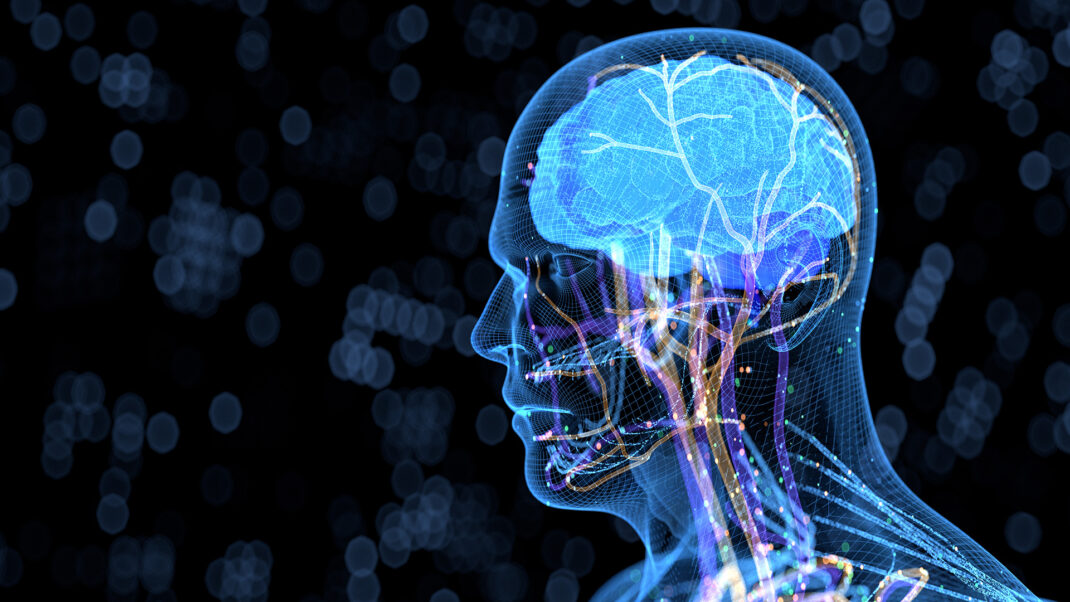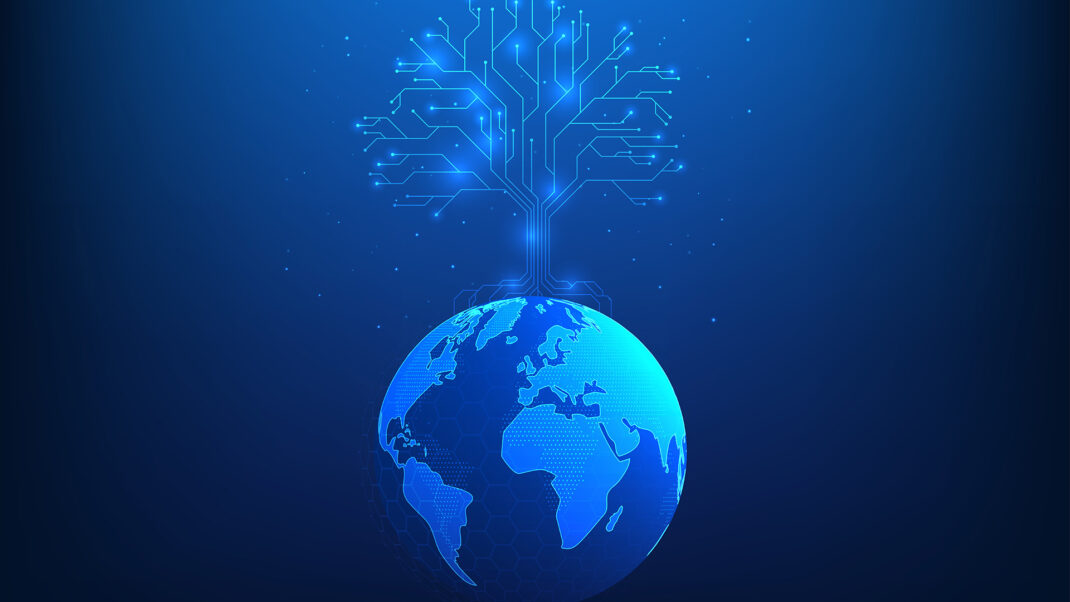The Dimensions of Wellness: A 360° View of Wellness
Understand the holistic approach to wellness and the importance of addressing health equity.

Wellness—or the active pursuit of activities, choices, and lifestyles that lead to a state of holistic health—involves collaborative components that meld together to form a multifaceted approach to overall well-being. These components, also known as dimensions of wellness, bring together key areas that need attention with a proactive focus to ensure that health is not primarily centered on one area or the other. Dialing into emotional, physical, occupational, social, spiritual, intellectual, environmental and financial facets of our lives, using balance and prioritization of self-care enables more desirable outcomes (CSU Pueblo n.d.) Motivation to own responsibility with overall wellness helps communities collectively progress chronic health and care outcomes, working within realms of accessibility and proximity.
Multiple research studies, involving subjects across diverse identities and demographics, show that world events happening since 2020 have impacted (and continue to impact) populations and their wellness. Shifts in recent years have impacted the trajectory of wellness in a multitude of ways. Now more than ever, individuals are prioritizing their needs inside and out in various ways, differences in access and available resources for communities have been exposed, and stigma is being removed from wellness topics that were once taboo, to focus (instead) on a comprehensive understanding of care methodologies. A 360° view of wellness starts with accountability, using accessible means and techniques, and seeing how the dimensions of wellness can overlap and impact one another.
Dimensions of Wellness #1: Movement Matters
Defining Physical Wellness of the Past and Present
From Ancient times to the Dark Ages, through the Renaissance, into the Revolutionary eras, and within modern history, physical wellness was related to overall body conditioning to a healthy body that could facilitate a healthy mind. Ancient Chinese civilizations between 2500 and 250 BC abided by the teachings of Confucius encouraging participation in physical activity. Cong Fu gymnastics was born in China to move the body through stances and movements modeled after the fighting styles of different animals (Dalleck 2001). During this same era, the Greek people developed gymnastics and physical wellness programming to facilitate healthy soldiers to defend the people and remain in pristine condition for overall health.
Fast-forwarding into more recent generations, government officials instituted the President’s Council on Youth Fitness which was the beginning of many present-day health and wellness programs. John F. Kennedy steered the movement of this program’s evolution, leading the federal government to institute fitness promotion nationally with youth fitness programs. Dr. Ken H. Cooper, largely known as the “father of the modern fitness movement,” spearheaded a new philosophy that proactively targeted disease prevention over disease treatment (Dalleck 2001). He encouraged the use of epidemiological data to support the health benefits of regular exercise.
Research including thousands of individuals was used as the foundation for Dr. Cooper’s “aerobics” concepts, although this omitted many populations of marginalized individuals. Thus, present-day fitness and movement modalities require new approaches to movement, through analyzing accessibility for populations that were not previously included in previous studies used for benchmark information today.
Focusing on Movement in All Shapes and Forms
Movement comes in all forms. From taking standing breaks during desk work or walking to the store instead of driving a car, there are a multitude of ways to blend movement into the day. “Exercise” or “physical activity” involves more focus on structure, routine, and regimen for energy expenditure as they relate to recommendations for overall healthy outcomes.
Physical activity is any bodily movement produced by skeletal muscles that requires energy expenditure and improves modifiable risk factors for a wide range of diseases (Dasso 2019).
Exercise focuses more on energy exertion through moving the body through a space. Movement provides more fluidity to how the body can move from one position to the next. We require movement to go from standing to sitting or from lying down to standing up. We require movement to play with the family at a park or to interact with virtual reality during a physical-play video game. Understanding that the goal of energy expenditure is to move the body so that it promotes joint function, causes the use of energy stored within the body (or caloric expenditure), and provides a healthy release of neurotransmitters that encourage happy feelings within the body (thanks, serotonin, and dopamine), can shift the mindset for how to incorporate movement into the day-to-day lives of many. Prescriptions that call for 45 minutes of exercise can be broken down into digestible chunks if there is no space for a full “exercise session”. All movement counts.
Walkability, a key characteristic that can be a difference between neighborhoods, involves how communities have access to either walk or bike as a means of transportation over the use of motorized vehicles. Walkability is a consideration of social determinants of health. It is associated with how much access communities have to be able to walk from one place to another or to utilize a bike within an area instead of having to commute with a vehicle. It can also include the percentage of available health and wellness facilities in proximity to residential areas.
As a popular term, it is utilized to represent characteristics of a communal infrastructure (social environment) that have crucial population-level impacts on physical activity, energy balance and health. Used by researchers, practitioners, and the general public, multiple operational definitions and measurement tools exist to drive a varied conceptual definition of walkability (Tobin et al. 2022). Looking at how much walkability a community has can shift the understanding of possibilities for movement throughout an area, alongside encouraging that movement to happen for those living in the area.
Focusing on movement in all shapes and forms translates into the following:
- using what is available within a surrounding neighborhood
- making time and space to see movement as an imperative opportunity for health intervention in a day
- knowing how movement is accessible for individual bodies and abilities
- staying encouraged to make it a part of everyday life even if different seasons require different modalities for exercise.
A “What you can, when you can” approach provides grace and a positive way of life for everyone to adapt for long-term results.
Dimensions of Wellness #2: Caring for the Brain and Cognition

Cognitive wellness is a key motivator for longevity through a focus on neurological health and well-being. This dimension of wellness consists of all aspects of wellness relating to brain health and the growth of thought-provoking mental activities (CSU Pueblo n.d.). Human cognitive abilities, including memory, can start to decline by the time someone reaches the age of 30 or 40. Specific memory test results show that by the time most people reach the age of 80, they can remember around half as much information as they did when they were 50 or younger. Due to the natural progression that can happen with cognitive decline, it’s imperative to maintain brain health and mental capabilities outside of years spent in school using an open growth mindset.
The U.S. Department of Health and Human Services (HHS) highlights objectives related to cognitive health by incorporating ongoing strategies around interventions to prevent age-related cognitive decline, mild cognitive impairment and clinical Alzheimer ‘s-type dementia (HHS n.d.). Activities such as reading for comprehension and enjoyment, completing puzzles, meditating, playing memory games, moving daily and having a proper food intake, are all ways to give the brain a workout.
Chantell Coyour, NASM Certified Personal Trainer and Nutrition coach guides her clients towards eating to fuel their entire bodies—including their brains—through whole-food nutrition. Coyour reminds folks, “Cognitive health is so much more than being about what you’ve done or what you’ve accomplished, and so much more about what you’re doing to continuously learn and challenge your brain” (Personal communication Feb. 1, 2024). Nutrition is enmeshed in quality brain health as well. Like any other part of the body, our brain needs calories and food fuel to function properly. The brain is only 2% of an average person’s body weight, however, it uses around 20% of our calorie intake. Brain fog, or difficulty thinking, can have links to what and how often someone eats (Haggie 2021).
The main component of food that the brain needs for energy is glucose. A simple sugar, glucose is carried into the bloodstream and converted into energy by tissue cells throughout the body. Unlike the rest of the body, though, the brain cannot store this energy. Constant, whole food sources of glucose include carbohydrate sources from natural juices, vegetables, whole grains, and fruits such as berries. Berries, themselves, are comprised of flavonoids which are antioxidants that protect cells from damage. Frequent availability of antioxidants can provide benefits that delay cognitive decline, as well as the onset of Alzheimer’s disease and dementia.
Dimensions of Wellness #3: Our Social Influences and Community
Defining Social Wellness and the Role It Plays in Our Health
The social wellness dimension includes everyday socialization between members of communities as they engage with one another. Relationships and interactions with various modes of communication used as a means of expression, bring about direct impacts on overall health (CSU Pueblo n.d.). Close connections to the communities of people can enhance the quality of someone’s environment to ensure that social wellness drives positive health outcomes consistently.
Social connectedness is the degree to which people have and perceive a desired number, quality, and diversity of relationships that create a sense of belonging, and being cared for, valued and supported. People with stronger social ties have a 50% increased chance of survival than those with fewer social connections. Fostering social connections plays a pivotal role in averting serious health implications, encompassing conditions associated with heart health, such as stroke and heart disease, cognitive well-being, including Alzheimer’s and dementia, and mental health, such as depression and anxiety (CDC n.d.).
A solid feeling of connection, blended with a variety of viewpoints within social circles, opens up avenues for both personal growth and support in overall well-being. Shared interests can lead to favorable results, whether you’re aiming to maintain a healthy lifestyle through physical activity or seeking advice on nutritious recipes. Finding others to join for a walk, indoor rock-climbing class, meal prep lesson, mindfulness seminar, or even a continuing education course, could all move the needle forward on progressing positive outcomes and end-goals. Collaborating with like-minded individuals fosters a sense of unity.
Simultaneously, it’s crucial to incorporate diverse perspectives to ensure that growth and awareness extend beyond one’s individual viewpoint. Research suggests a positive link between a strong community spirit, motivation for positive health outcomes and the influence of social connections, on various dimensions of wellness.
Comparatively, negative interactions and relationships can have the opposite effect on health and well-being. Don and colleagues (2003) published a study that followed 4,005 participants who engaged in check-ins every three days on their blood pressure, heart rate, stress markers and coping response, while also providing assessments of their relationships. “People with more positive experiences and fewer negative experiences [in their relationships] reported lower stress, better coping, and lower systolic blood pressure reactivity, leading to better physiological functioning in daily life,” write the study authors (Don et al. 2023).
Bad-quality relationships cause stress and strain on the body that may increase the risk of cardiovascular health events, and chronic disease, and may cause early mortality. Partners who are more negative and hostile in their daily interactions have increased cardiovascular reactivity, immune response, higher inflammation and higher levels of cortisol. Research on direct correlations between relationships and negative social interactions continues through the ongoing review of biological markers that can foster and exacerbate health and health problems.
Dimensions of Wellness #4: Spirituality
Spirituality and spiritual well-being extend beyond the confines of religious affiliations which encompass a belief in a higher power while transcending the boundaries of any specific faith. At its core, spirituality is the pursuit of an enriched sense of purpose and meaning in life, intricately intertwined with personal morals, ethics, and a broader connection to the world (CSU Pueblo n.d.). Within the realm of spirituality, three key dimensions emerge:
- the Religious Dimension,
- the Individualistic Dimension; and
- the Material World-Oriented Dimension.
The Religious Dimension involves the cultivation of knowledge, attitudes, and practices rooted in a divine unity, fostering a dynamic and active relationship with oneself, others and nature. This dimension emphasizes the impact of one’s beliefs on all aspects of their connections with the world. Meanwhile, the
Individualistic Dimension centers on the pursuit of meaning and spirituality, aiming to overcome spiritual ailments such as hopelessness, while promoting love, happiness and forgiveness. Here, the focus lies on maintaining a positive moral character and ethical beliefs, acknowledging that certain aspects of human existence elude explanations from purely physical, mental or social perspectives. Spiritual health, as a holistic concept, encompasses living a purposeful life and achieving transcendence, fostering actualization across various dimensions and capacities.
The Material World-Oriented Dimension is characterized by altruism, selfless assistance to others without expecting reciprocity, a profound sense of closeness and harmony with the universe, and human connection grounded in moral virtues (Ghaderi et al. 2018). In essence, spirituality emerges as a multifaceted journey involving interconnected elements of social wellness, self-awareness and mindfulness, offering a profound understanding of the diverse dimensions that contribute to a fulfilling and balanced life.
In Indian history, Hindu priests blended spirituality with exercise methodologies with their religious beliefs into present-day yoga. Translating into the word “union,” yoga has origins that reference the Hindu philosophy of uniting the body, through mind and spirit (Dalleck 2001). Many individuals may find that their spirituality relates to them in an individualized and unique way through time spent with their communities, through movement opportunities that center the mind, or in stillness with themselves. No matter someone’s choice for how they delve into their spiritual wellness, making time to pause for reflection and deep inner work can ease the body’s flight or fight tendencies and create a larger sense of self, despite the chaos in the external world.
Dimensions of Wellness #5: Environmental Impacts

Defining Environmental Wellness Today
Environmentalism and sustainability remain at the forefront of conversations today in a world full of change on the planet that humans share. Environmental wellness includes eco-friendly topics, reducing waste, recycling and reusing, proper disposal of electronics and medicine, energy, fuel, and water conservation, and sustainable product options (CSU Pueblo n.d.).
As a social goal for people to co-exist on planet Earth over a long period of time, sustainability has become a hot topic in recent years, given the shift in climate across the globe along with a reduction in available natural resources for humans to share and keep plentiful. Communities, globally, have a responsibility to maintain a healthy home base for life to thrive. Depending on what individuals and families use or have access to (i.e., plastics, recycling locations, and materials), an environment can either sustain life, or impact life in an unhealthy way. In addition to sustainability, the environment also includes surrounding infrastructure that directly impacts the wellness of the communities that live in and around it.
Health Equity at the Center of Wellness
Worldwide, increased negative health impacts and deaths are the result of modifiable environmental conditions, like built environments such as housing, workplaces, and roads, as well as air, water and soil pollution. Environmental conditions are closely related to the social determinants of health. Social determinants are the conditions in the various environments people occupy—where people are born, where they live, work, play, worship, and more—that affect health and quality of life.
Environmental and social determinants of health, as articulated in research and literature of Healthy People 2030 from the HHS (n.d.), “are hard to disentangle and hard to measure separately.” Physical environments affect stress levels and fatigue, both bodily and mentally. Additionally, as discussed in the above segment related to Social Wellness, the availability of social relationships can be particularly crucial for individuals with mental health conditions. Reducing stress and increasing access to social supports are key to recovery and reducing symptomatology (HHS n.d.).
Environmental pollutants can cause health problems like respiratory diseases, heart disease and some types of cancer. People with low incomes are more likely to live in polluted areas and have unsafe drinking water. And children and pregnant women are at higher risk of health problems related to pollution. Redlining refers to the practice of systematically denying various services (e.g., credit access) to residents of specific neighborhoods, often based on their race and/or ethnicity and primarily within urban communities. Its historical context includes both legally sanctioned and interpersonal aspects of structural racism. As a result of present-day infrastructure being a generational evolution of historically redlined residential areas, home evictions, health effects of pollutants, and food insecurity continue to perpetuate community inhabitants of these communities.
This is just one example highlighting persistent associations between structural racism and present-day social determinants of health (Edege et al. 2023). Ongoing studies and evidence show the impacts and health consequences of historical redlining on current-day health conditions including increased risk of diabetes, hypertension and early mortality due to heart disease. Understanding the root of how historical impacts affect communities is one way of comprehending controllable and uncontrollable elements of wellness and health outcomes.
Dimensions of Wellness #6: Work-Life Balance
Defining Vocational Wellness and What That Looks Like Today
In the vast mosaic of health and well-being, Occupational Wellness emerges as a pivotal thread that weaves through the fabric of one’s life, influencing personal satisfaction, fulfillment, and the broader sense of purpose derived from one’s vocation, job or career (CSU Pueblo n.d.) Occupational Wellness extends far beyond the conventional metrics of professional success, delving into the nuanced interplay between an individual’s chosen occupation and its profound impact on their overall health and satisfaction.
The nature of the work, the duration invested in it on a daily or weekly basis, and the delicate balance it maintains or disrupts with other life priorities, all intricately contribute to the holistic picture of well-being— most know this recipe as “work-life balance.” Recognizing its interconnections with the broader dimensions of life and the profound implications it holds for our journey toward a more harmonious existence makes occupational (or vocational) wellness a key priority for individuals to pay attention to.
The HSS works to prevent injuries on the job for individuals and communities, while workplaces have their own unique set of expectations driven by workplace laws and safety compliance. Depending on someone’s unique position with why they do what they do for work, there can be heavier impacts on their overall health. Whether it’s desk sitting or strenuous movement and lifting, people can need their other wellness dimensions as a means of lowering the impact of that work. Commuting to and from work, using child care or other familial supports, and stress from timelines and due dates, can all lay a heavy weight that throws the work-life balance off for some.
Dealing within the controllable elements of each dimension continues to be magic that can enable work to fulfill life or to take away from it. Comprehending the ability to do this is also a matter of equity for some, as their job can be indicative of their access to mentoring, education or environment.
Dimensions of Wellness #7: Money Matters

The condition of finances and money matters drive a focus on financial wellness. Leveraging healthy means of money management, saving for a rainy day and life happenings or experiences, and thinking about how to balance spending and saving, are areas of life where everyone has unique approaches to their distinct situation (CSU Pueblo, n.d.). Everyone has their unique layout and goals for financial wellness to gain control of how finances can work for someone’s individual or familial life. This unique dimension encompasses how to manage a budget and spending habits, monitor credit cards and usage, balance checking and savings accounts, leverage investments and retirement funds, as well as look at uniqueness with money matters given what someone does or cannot change.
Financial wellness is a deeply nuanced aspect, shaped by both personal circumstances and the broader community context. Individual and communal financial landscapes are unique, and influenced by socioeconomic status, personal choices and historical events. The ebb and flow of financial well-being throughout history, from the Great Depression to war times and economic uncertainties, underscores the dynamic nature of this facet of life. Adaptability becomes paramount as people navigate times of strain, emphasizing the need to prioritize essential spending over more discretionary expenses.
Socioeconomic status plays a pivotal role, creating a diverse spectrum of financial realities for everyone. Disparities in income, education and resource access contribute to varying levels of financial stability. Higher socioeconomic brackets may afford greater resilience in the face of economic fluctuations, while those in lower brackets may grapple with increased vulnerability. Recognizing these differences is crucial for a comprehensive understanding of financial well-being. Embracing adaptability, informed decision-making and a focus on essential needs can foster resilience, contributing to a more sustainable financial future for individuals and communities alike (HHS n.d.).
Dimensions of Wellness #8: Mental Health as a Priority
Defining Emotional Wellness and Removing the Stigma Around Mental Health
Emotional well-being necessitates a cultivated awareness of one’s inner emotional landscape, fostering a deep understanding of the nuanced sentiments within. Mental health delves into the intricate realms of both our conscious and subconscious minds, unpacking their profound impact on our behaviors, emotions and overall attitudes. The imperative lies in attuning ourselves to the expanse of mental health and not underscoring its pivotal role in holistic well-being. This entails ensuring that our cognitive domain operates with a compass of positive intentions, fostering a state of mental flourishing alongside our physical vitality.
Confronting the persistent stigma around mental health discussions remains an ongoing societal goal, with communities and individuals steadfastly working to dismantle barriers. The objective is to preemptively address the intricacies of the mind, navigating away from a reactive stance. In this pursuit, we aim to fortify communal mental resilience, preventing the revelation of vulnerabilities during tumultuous times, be it historical upheavals, global discord, or the disruptive impact of the COVID-19 pandemic. The ultimate aspiration is a proactive approach, an unwavering commitment to understanding and nurturing the mind to ensure its enduring well-being.
Self-Awareness: The 9th Dimension Within Mental Health and Emotional Wellness
A forward-moving journey towards improved mental health, or overall health and wellness, starts with understanding yourself first and foremost. It can be human nature to step outside of one’s self and focus on external impacts on health and daily to-dos, but what if we all looked within first? A primary component of emotional intelligence, self-awareness includes recognizing what makes someone unique, including the personality, actions, values, beliefs, emotions, and thoughts that make someone special. (Workplace Strategies for Mental Health n.d.).
To be well, the first step is to own responsibility; to have an agency with wellness from the perspective of improving overall, and using what resources are available to do so. Understandably, everyone has their unique lens through which they live life and access through which they experience wellness. The target should be to home in on that, and work within that envelope. Self-awareness Theory speaks to the individual’s ability to observe their thoughts, instead of merely experiencing them in real-time, to enable self-control and encourage mindful decision-making (Ackerman 2023).
Mindfulness, or staying centered and aware of one’s self, involves the ability to understand how to introspectively center the body before focusing on external factors. Focusing on the parasympathetic nervous system, the antithesis of the sympathetic nervous system which controls stress responses, benefits from somatic healing practices such as deep breathing or meditation. Slow-paced breathing may slow the early stages of Alzheimer’s disease in adults who are still cognitively healthy; this simple relaxing technique could be a low-cost and low-risk way to reduce the risk of the disease (Yoo et al. 2023).
Meditation, which is the practice of allowing the mind to focus on a thought, object, a focal point, allows being aware while training the mind to create its path (Ackerman 2023). Journaling and taking the time to write or type out thoughts that are on the mind, is another opportunity to shift into mindful self-awareness, and it plays double duty to enhance cognitive function as well.
Closing Thoughts on the Dimensions of Wellness
In the pursuit of holistic and overall wellness, we must acknowledge and prioritize the multifaceted dimensions of wellness. Beyond the traditional realms of physical health, mental and emotional resilience, social connectedness, and intellectual stimulation are integral components of a truly balanced life with occupation, finances, and an understanding of accessibility.
Moreover, our commitment to well-being must be unwaveringly linked to the principles of health equity. Recognizing the diverse needs and circumstances of communities and individuals is paramount, as we strive to eliminate disparities in accessibility to wellness resources. It is through this comprehensive approach that we not only enhance our understanding of well-being but also foster a sense of accountability to ensure that the benefits of a healthy life are accessible to all, regardless of their background or circumstances. Embracing the full spectrum of wellness, and championing health equity, positions us on a collective journey toward a healthier, more equitable future for everyone.
References
Abramson, A. 2024. . Psychology is improving brain health and aging. American Psychological Association. apa.org/monitor/2024/01/trends-brain-health-aging
Ackerman, C. E. 2023. What is Self-Awareness? (+5 Ways to Be More Self-Aware). PositivePsychology.com. Accessed Apr. 26, 2023: positivepsychology.com/self-awareness-matters-how-you-can-be-more-self-aware/
CDC (Centers for Disease Control and Prevention) (n.d.). How does social connectedness affect health? Accessed May 8, 2023: cdc.gov/emotional-wellbeing/social-connectedness/affect-health.htm
CSU Pueblo (n.d.). 8 Dimensions of Well-Being. Accessed Jan 25, 2024: csupueblo.edu/health-education-and-prevention/8-dimension-of-well-being.html
Dalleck, L. (n.d.). The history of fitness. IDEA Health & Fitness Association. Accessed Dec 31, 2001: www.ideafit.com/personal-training/the-history-of-fitness/.
Dasso N. A. 2019. How is exercise different from physical activity? A concept analysis. Nursing Forum, 54(1), 45–52. https://doi.org/10.1111/nuf.12296
Don, B. P., Gordon, A. M., & Mendes, W. B. 2023. The good, the bad, and the variable: Examining stress and blood pressure responses to close relationships. <em>Social Psychological and Personality Science, 194855062311560. doi.org/10.1177/19485506231156018
Egede, L. E., et al. 2023. Modern Day Consequences of Historic Redlining: Finding a Path Forward. Journal of General Internal Medicine, 38(6), 1534–1537. doi.org/10.1007/s11606-023-08051-4
Eichenseher, T. How to develop Self-Awareness and why it’s important. Psych Central. Accessed Apr. 21, 2022: psychcentral.com/health/self-awareness
Ghaderi, A., et al. 2018. Explanatory definition of the concept of spiritual health: a qualitative study in Iran. Journal of Medical Ethics and history of Medicine, ncbi.nlm.nih.gov/pmc/articles/PMC6150917/
Global Wellness Institute (n.d.). . What is Wellness?Global Wellness Institute. Accessed Aug. 21, 2023. globalwellnessinstitute.org/what-is-wellness/
Heggie, J.. Food for thought: How to feed our brains better. National Geographic. Accessed May 3, 2021. nationalgeographic.com/science/article/partner-content-keeping-our-brain-healthy.
Harrison, E., et al. 2021. COVID-19 pandemic-related changes in wellness behavior among older Americans. BMC Public Health. https://bmcpublichealth.biomedcentral.com/articles/10.1186/s12889-021-10825-6
HHS (U.S. Department of Health and Human Services). (n.d.). Social Determinants of Health – Healthy People 2030 | Health.gov. Healthy People 2030. Accessed January 9, 2024: health.gov/healthypeople/priority-areas/social-determinants-health
Workplace Strategies for Mental Health. Self-awareness for emotional intelligence. Accessed Jan. 29, 2021: workplacestrategiesformentalhealth.com/resources/self-awareness-for-emotional-intelligence
Tobin, M., et al. 2022. Rethinking walkability and developing a conceptual definition of active living environments to guide research and practice. BMC Public Health 22, 450. doi.org/10.1186/s12889-022-12747-3
WHO (World Health Organization):. Social determinants of health. Accessed May 30, 2019: who.int/health-topics/social-determinants-of-health#tab=tab_1
Yoo, H. J., et al. 2023. Daily biofeedback to modulate heart rate oscillations affects structural volume in hippocampal subregions targeted by the locus coeruleus in older adults but not younger adults. Neurobiology of Aging, 132, 85–99. https://doi.org/10.1016/j.neurobiolaging.2023.08.010
Katrina Liew Wilson
Katrina Liew Wilson is a certified personal trainer and fitness specialist, health and nutrition coach, group fitness instructor and wellness educator. She holds certificates in Diversity and Inclusion from Cornell University and the University of South Florida. She also has an Associate of Science Degree in graphic design and is completing a graduate degree in Nutrition: Health Promotion. Katrina is also the senior manager of diversity, inclusion, and belonging at Barry’s Bootcamp where she bridges gaps of equity, diversity, and inclusion through education and coaching. Her goal is to lead her community by example and relatability to shift the wellness culture to be one of belonging and accessibility.






